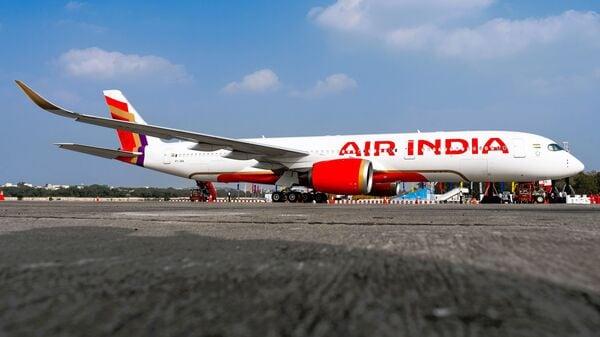Air India Pauses Delhi-Washington Service Amid Fleet Limitations and Geopolitical Barriers
Air India has officially suspended its direct flights connecting Delhi and Washington, attributing the decision primarily to a shortage of available aircraft. This interruption affects a vital intercontinental corridor and reflects the broader operational difficulties the airline is encountering. The scarcity of planes capable of servicing this long-haul route, combined with external geopolitical factors, has compelled the national carrier to halt operations temporarily.
One significant external factor exacerbating the situation is Pakistan’s continued prohibition on allowing flights to traverse its airspace. This restriction forces Air India to adopt lengthier flight paths, which in turn elevates fuel consumption and extends travel durations. The cumulative effect of these challenges has strained the airline’s scheduling and financial resources, leading to the suspension. Key contributors to this decision include:
- Limited aircraft availability due to maintenance demands and fleet allocation priorities.
- Flight rerouting complexities caused by Pakistan’s airspace closure.
- Escalated operational expenses stemming from longer routes and increased fuel usage.
| Factor | Operational Impact |
|---|---|
| Fleet Limitations | Reduced flight frequency and route suspension |
| Airspace Restrictions | Longer detours causing delays and higher costs |
| Passenger Experience | Temporary service disruption and inconvenience |
Consequences of Pakistan’s Airspace Closure on Global Aviation Routes
The ongoing ban on flights passing through Pakistan’s airspace has forced numerous international airlines to significantly modify their flight trajectories, especially on transcontinental routes. This adjustment has led to longer flight durations, increased fuel consumption, and heightened operational costs. Airlines like Air India are compelled to reevaluate the feasibility of certain routes under these constraints. The operational challenges include:
- Flight times extended by approximately 30 to 45 minutes per leg.
- Fuel consumption rising by up to 15%, impacting profitability.
- Complex rerouting necessitating enhanced coordination with air traffic control authorities.
These factors collectively strain aircraft utilization, forcing airlines to reduce the number of daily flights and complicate scheduling. For example, Air India’s suspension of the Delhi-Washington service is influenced not only by aircraft shortages but also by the increased block times resulting from these detours. This situation stretches the airline’s fleet capacity, disrupting the delicate balance required to maintain international flight frequencies.
| Operational Challenge | Resulting Effect |
|---|---|
| Airspace Closure | Additional 200+ nautical miles per flight, increasing duration |
| Fuel Expenses | Up to 15% rise in fuel costs per sector |
| Aircraft Utilization | Reduction of 1-2 flight cycles daily |
| Flight Punctuality | Average delays exceeding 20 minutes |
Operational Impacts and Passenger Experience Amid Route Suspension
The halt of Air India’s Delhi-Washington flights has triggered a series of operational challenges, affecting both the airline’s network and its customers. The primary issues include:
- Aircraft scarcity: The limited number of available planes has necessitated resource reallocation, influencing other domestic and international routes.
- Route modifications: The airspace ban has forced the adoption of longer, less efficient flight paths, increasing operational costs and flight durations.
- Scheduling disruptions: Passengers are experiencing frequent changes, cancellations, and the need for rebooking, complicating travel plans and increasing customer service demands.
To illustrate the operational impact, the following data compares average delays and cancellation rates before and during the suspension period:
| Metric | Pre-Suspension | During Suspension |
|---|---|---|
| Average Flight Delay | 15 minutes | 48 minutes |
| Cancellation Rate | 2% | 12% |
| Passenger Rebookings | Minimal | Substantial increase |
Effective Strategies for Airlines to Manage Airspace Restrictions and Fleet Limitations
Airlines grappling with the combined pressures of airspace closures and aircraft shortages must implement comprehensive strategies to maintain service continuity and customer trust. A critical approach involves diversifying flight routes by utilizing alternative air corridors, even if these paths are longer, to avoid restricted zones while preserving connectivity. Maintaining close communication with aviation authorities and monitoring geopolitical developments enables airlines to adapt swiftly to changing conditions.
Additionally, forming or expanding code-share partnerships with other carriers can help bridge capacity gaps, offering passengers more travel options despite operational hurdles. Optimizing fleet deployment by prioritizing high-demand routes and adjusting aircraft assignments based on passenger load factors enhances efficiency during periods of limited resources. Short-term solutions such as leasing aircraft or wet-lease agreements can provide immediate capacity relief while longer-term fleet expansion plans are pursued.
| Challenge | Recommended Approach | Anticipated Benefit |
|---|---|---|
| Airspace Limitations | Route Diversification and Diplomatic Engagement | Preserved connectivity with reduced delays |
| Fleet Shortages | Short-Term Leasing and Flexible Aircraft Deployment | Enhanced operational capacity and fewer cancellations |
| Passenger Assurance | Clear Communication and Alternative Travel Options | Improved customer satisfaction and loyalty |
Conclusion
The suspension of Air India’s Delhi-Washington flights highlights the intricate challenges airlines face amid geopolitical tensions and fleet constraints. Navigating the Pakistan airspace ban alongside limited aircraft availability presents a complex operational landscape. As Air India and other carriers adapt to these evolving conditions, travelers and industry stakeholders will be watching closely for updates on route resumptions and alternative travel solutions. This scenario underscores the delicate balance between aviation logistics and international diplomacy in today’s dynamic environment.







